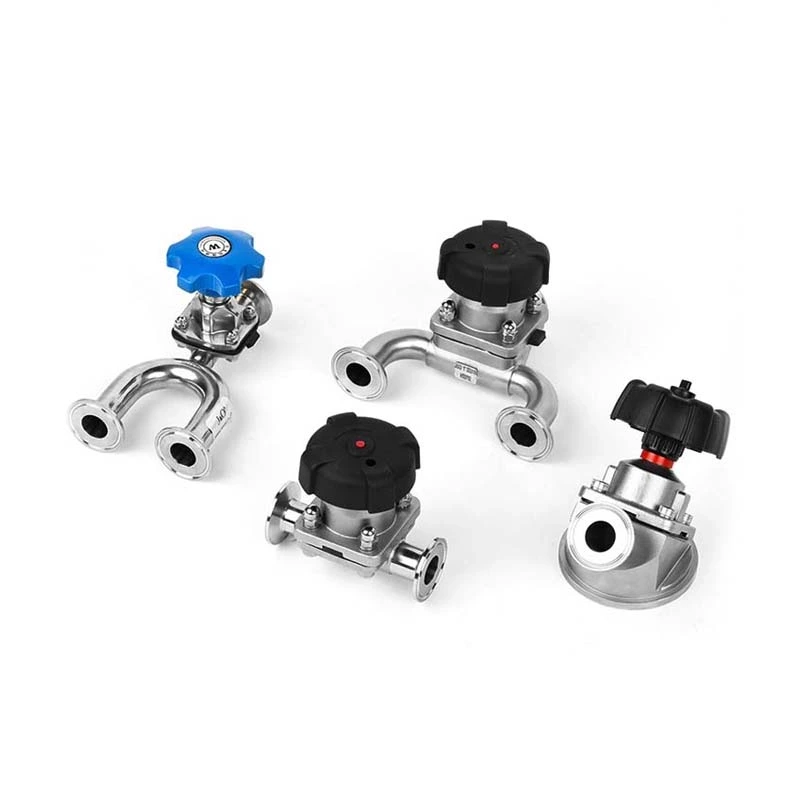The Main Function Of The Manual Diaphragm Valve Is To Control The Flow Of Fluid
Sanitary Diaphragm Valve is a commonly used valve. It uses an elastic diaphragm connected to a compressed or stretched valve stem. The position of the diaphragm is controlled by rotating the handle, thereby controlling the flow of the fluid. This valve is widely used in chemical, pharmaceutical, food and other industries, with simple structure, good sealing performance and long service life.
The main function of the manual diaphragm valve is to control the flow of fluid. When the handle rotates, the diaphragm will move up and down, changing the degree of opening of the valve, thereby controlling the flow and pressure of the fluid. In the closed state, the diaphragm fits tightly on the valve seat to form a complete sealing surface to prevent fluid leakage; in the open state, the diaphragm leaves the valve seat to form a channel so that the fluid can pass smoothly. It can also be used to adjust the flow, cut off the fluid, change the flow direction and other operations.
The advantages of the manual diaphragm valve are mainly reflected in the following aspects:
1. Good sealing performance: Since the contact area between the diaphragm and the valve seat is large and the diaphragm has a certain elasticity, it can achieve a good sealing effect in the closed state, effectively preventing fluid leakage.
2. Strong corrosion resistance: The valve body and diaphragm are usually made of corrosion-resistant materials, such as stainless steel, plastic, etc., so they have strong corrosion resistance and are suitable for the transportation of various corrosive media.
3. Easy maintenance: The structure is relatively simple, and it is relatively easy to disassemble and replace parts, which is convenient for daily maintenance and maintenance.
4. Long service life: During the working process, the friction between the diaphragm and the valve seat is small, so the wear is slow and the service life is long.
However, there are some limitations of manual diaphragm valves:
1. Cannot be used in high temperature and high pressure environment: Due to the material and structural limitations of the diaphragm, it is not suitable for high temperature and high pressure environment, otherwise it may cause deformation or damage to the diaphragm.
2. Limited flow control ability: Compared with other types of valves, the flow control ability is relatively weak, and it is not suitable for occasions where accurate flow control is required.
3. Sensitive to particles: Manual diaphragm valves are more sensitive to particles in the fluid, which may block the valve or scratch the diaphragm, affecting the normal operation of the valve.
